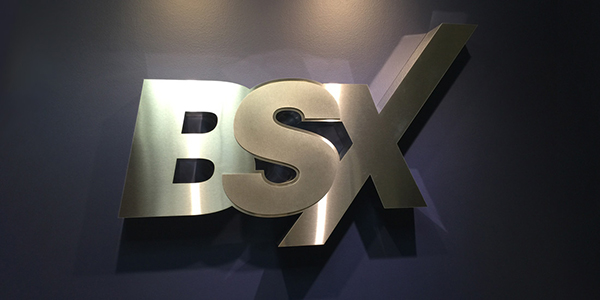Copyright brecorder

The Federal Reserve’s decision on interest rates was the highlight of the week in financial news. The wording suggested it was a hawkish rate cut following the Fed’s choice to lower its policy rate by 25 basis points, which adjusted the Fed funds rate to between 3.75 percent and 4.00 percent. However, two dissenting voices within the committee expressed concerns that could impact the next meeting, particularly if there are no clear signs of a slowdown in the labour market and economic growth. Fed Chairman Jerome Powell also appeared to be on the defensive. In light of the interest rate decision, two policymakers quickly asserted that while the economy remains strong and inflation is elevated, the strategy should focus on curtailing demand growth. One Fed member indicated that a rate cut in December would only be feasible if there were clear signals of a significant downturn in the labor market and a decrease in inflation. Despite this, the futures market is now estimating a 60 percent chance of a 25 basis point cut in the upcoming meeting, down from a previous 90 percent. Future adjustments to rates will hinge on forthcoming economic data and comments from Fed officials concerning the economy. Key US economic data is notably absent. There were no reports on employment, GDP, the PCE deflator, personal income, or spending, primarily due to ongoing funding disputes within the US government. Recent figures regarding home sales have indicated a downturn, and consumer sector indicators also suggest a reduction in demand. Meanwhile, the US government shutdown has now reached its fifth week, having completed its first month, with potential challenges ahead for welfare programmes due to funding issues. On the global stage, it was a busy week for central banks. As mentioned in previous analyses, the Bank of Canada (BoC) has reduced its policy rate by 25 basis points to 2.25 percent. In contrast, both the European Central Bank (ECB) and the Bank of Japan (BOJ) opted to keep their policy rates unchanged. Next Tuesday, the Reserve Bank of Australia (RBA) will announce its decision. Given the high inflation numbers from Q3 and the latest headline inflation, it is possible that the RBA may choose to hold its rate steady at 3.60 percent for now. The Bank of England (BoE) is set to meet on Thursday to decide on interest rates. I maintain my previous prediction of a rate cut in December. However, the BoE’s projections and forward guidance may offer the market clearer insights moving forward. Another significant event was the gathering of global leaders at the Asia-Pacific Economic Cooperation (APEC) summit in Gyeongju, South Korea. It seems that the discussions between US President Donald Trump and Chinese President Xi Jinping have alleviated some of the trade tensions between these two major economies. Additionally, the strain in global financial markets has somewhat eased following President Trump’s agreement to lower the tariff on fentanyl and to suspend reciprocal trade tariffs, reducing from 35% to 10%, while also relaxing restrictions on Chinese companies. In response, China plans to ease its restrictions on rare earth exports and boost its soybean purchases from the United States. As a result of these positive developments in the geopolitical landscape, the USD index has risen by 0.35 percent, marking its best performance in two months. It gained value against the Japanese yen and the British pound. Gold continues to trade within a wide range. Last week, gold reached its lowest point and dropped almost 11 percent from its peak of US$ 4381.60. Although it bounced back, it was still down by 8.65 percent from that highest value when the market closed on Friday. Following a sharp drop last week, gold attempted several times to rebound but has been unable to break through the key resistance level of US$ 4080, remaining under pressure. I believe that investors and central banks are monitoring and analyzing the market and geopolitical situation closely. Without the participation of the two main market players, gold might find it difficult to rise at a similar pace and sustain its consistent upward momentum. Nonetheless, volatility is expected to persist, ensuring market instability. The actions of fund managers, hedge funds, and investors will play a crucial role in driving this volatility. However, the situation is far from settled. The Russia-Ukraine conflict remains unresolved, and Venezuela is likely to encounter significant challenges. Geopolitical instability will continue to be a major concern. This week, key US economic data is set to be released, including the ISM Manufacturing Index on Monday, ISM Services on Wednesday, and Consumer Credit on Friday. WEEKLY OUTLOOK — NOV 3-7 GOLD @ US$ 4002.30— Gold is definitely poised for another volatile week. While it is attempting to surpass US$ 4088 to reach US$ 4168, if it doesn’t manage to climb higher, there will be a heightened risk of falling below $ 3958, potentially leading to tests at US$ 3905 or US$ 3870. EURO @ 1.1536 — Initially Euro is anticipated to remain above the support level of 1.1470, aiming for a rise toward 1.1650 or 1.1710 before reaching its peak. GBP @ 1.3155 — Pound Sterling is currently finding support at 1.3060, and it is expected to hold this level. Nevertheless, the potential for gains may be capped near 1.3290 or 1.3350, as there is a significant risk of losing upward momentum. JPY @ 154.01 — The potential for the US$/YEN pair to rise appears restricted beyond 155.10 and is expected to correct. If it breaks below 153.05, it could encourage a move towards the 152.20 levels before USD finds support. If not, it may drop to 151.40. Copyright Business Recorder, 2025



